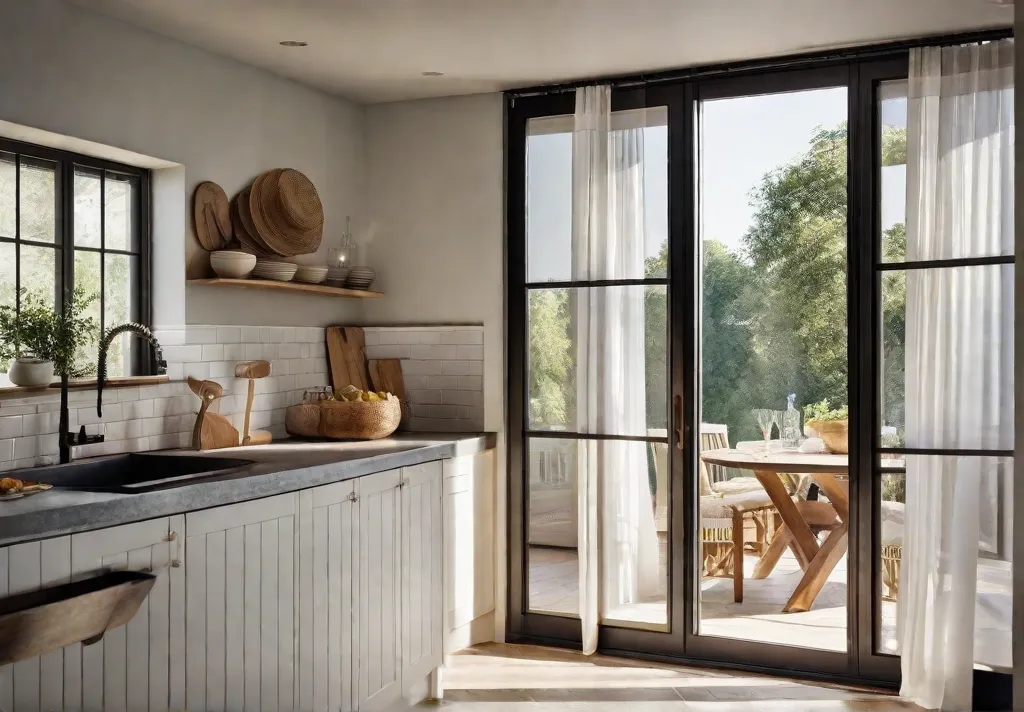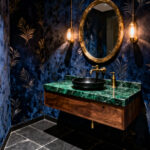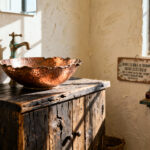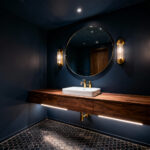Rustic kitchen decor has captivated homeowners with its timeless charm and cozy ambiance. But what exactly makes a rustic kitchen feel warm, inviting, and authentic? As a home renovation expert and design enthusiast based in San Antonio, I’ve crafted many beautiful rustic kitchens. Through trial and error, I’ve identified eight essential elements that bring this style to life.
Introduction to Rustic Kitchen Decor
A rustic kitchen seamlessly blends functionality with an earthy aesthetic by incorporating natural materials like wood, stone, and metal. The goal is to create a space that feels grounded, cozy, and connected to nature.
When designed thoughtfully, rustic kitchens become the heart of a home – a welcoming gathering place where memories are made over home-cooked meals.
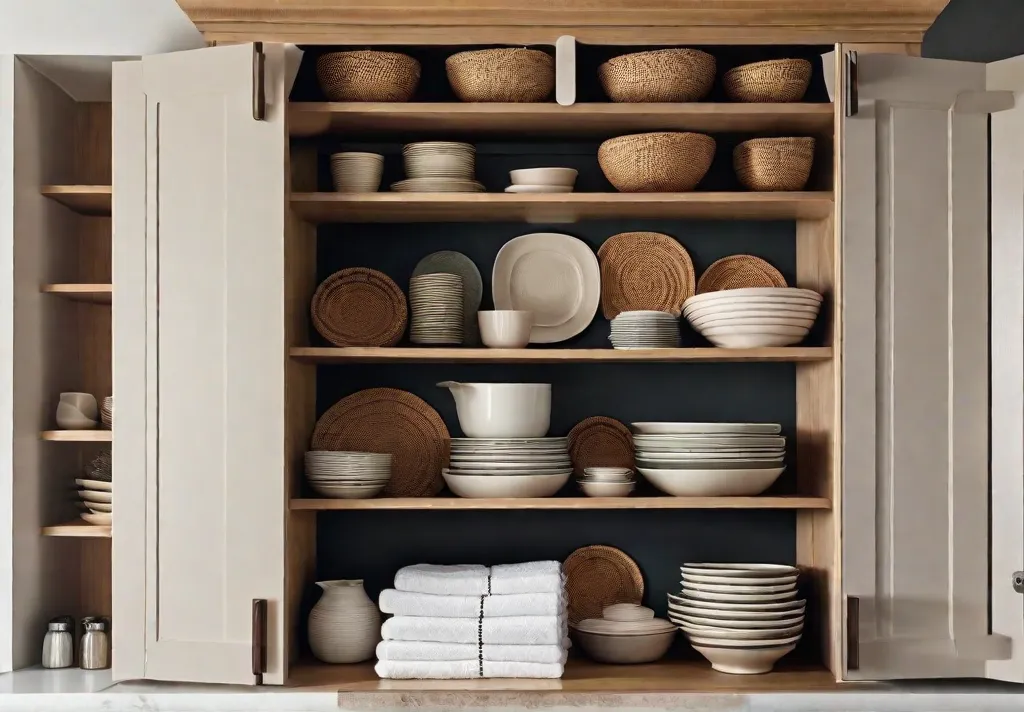
This post’ll explore the eight fundamental elements for achieving authentic rustic style while enjoying a modern kitchen’s conveniences. Whether you’re embarking on a full remodel or want to add farmhouse flair to your existing space, these key ingredients will help you create a warm, inviting kitchen your family and friends will flock to.
Natural Wood Finishes
Wood brings organic texture and natural beauty to any rustic kitchen. Weathered wood finishes like reclaimed barn boards tell a story of time and use, adding character.
While hardwoods like oak and maple are ideal for cabinetry and tables, softer woods like pine add rustic charm to shelving, sliding barn doors, and ceiling accents.
Critical Types of Wood Finishes
- Reclaimed Wood: Salvaged from old barns and buildings, reclaimed wood adds aged character from its weathered surface, knots, and natural imperfections. It brings a sense of authenticity and history to new rustic kitchens.
- Butcher Block: Usually made from maple or walnut, butcher block offers a thick, durable work surface that can be stained, oiled, or left natural. Its visible wood grain pairs beautifully with rustic cabinets and fixtures.
- Exposed Beams: Whether structural or decorative, exposed wooden ceiling beams add height, texture, and a cabin-like feel. Whitewashed pine or aged barn wood beams complement most color schemes.
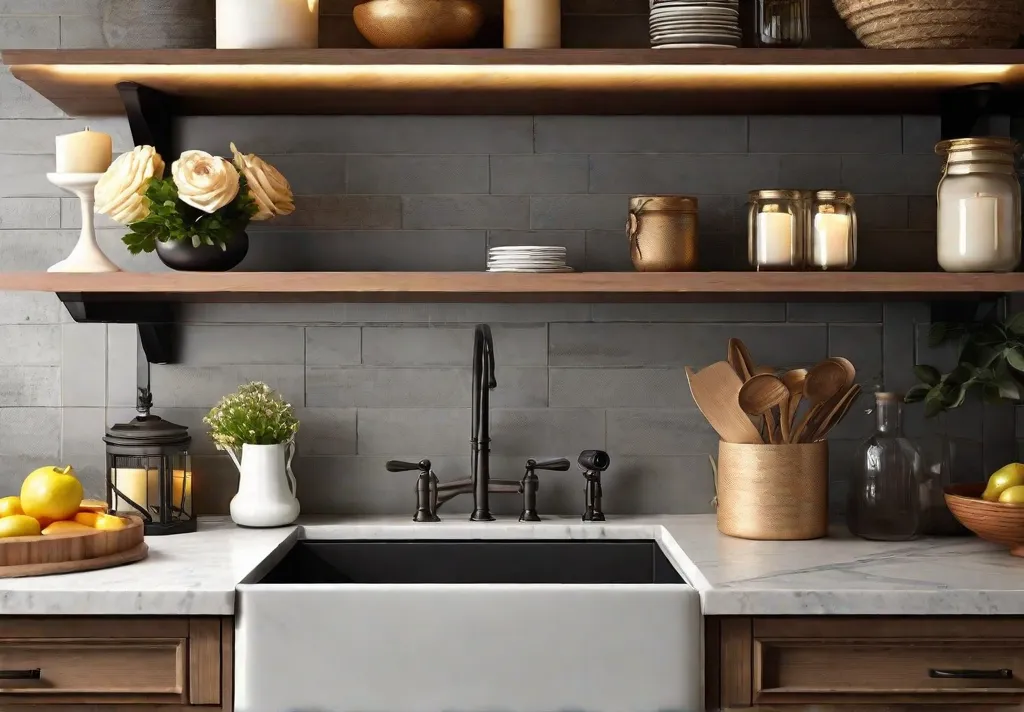
Tips for Incorporating Natural Wood
- Stain or whitewash reclaimed wood to tone down imperfections if the distressed look is too busy.
- Add warmth with wooden shelves, cabinets, and sliding barn doors.
- Contrast with black metal hardware and fixtures.
- Limit highly polished finishes for a natural, organic look.
Stone Elements
Natural stone brings raw, textural beauty that grounds a rustic kitchen and connects it to the surrounding landscape. Granite, marble, and travertine add elegance as countertops or backsplashes, while stacked ledge stone lends a rugged, organic look to accent walls.
Types of Stone for Rustic Kitchens
- Granite: This natural stone is one of the most popular options for countertops and islands, thanks to its durability, stain resistance, and timeless look. Colors range from solid black to stone with golden flecks.
- Marble: While softer than granite, marble offers elegance and style with its gentle veining in shades of grey, white, and black. Use in low-traffic areas or pair with a sealant.
- Travertine: This natural limestone comes in earthy beiges and ivories, featuring a slightly textured surface with natural holes and pits that epitomize organic style. The rustic stone works well for backsplashes.
- Ledgestone: Available in slate, sandstone, and quartzite, ledge stone brings a chunky, hand-laid stone look to accent walls and fireplaces with its layered irregular shapes. The rugged texture grounds the space.
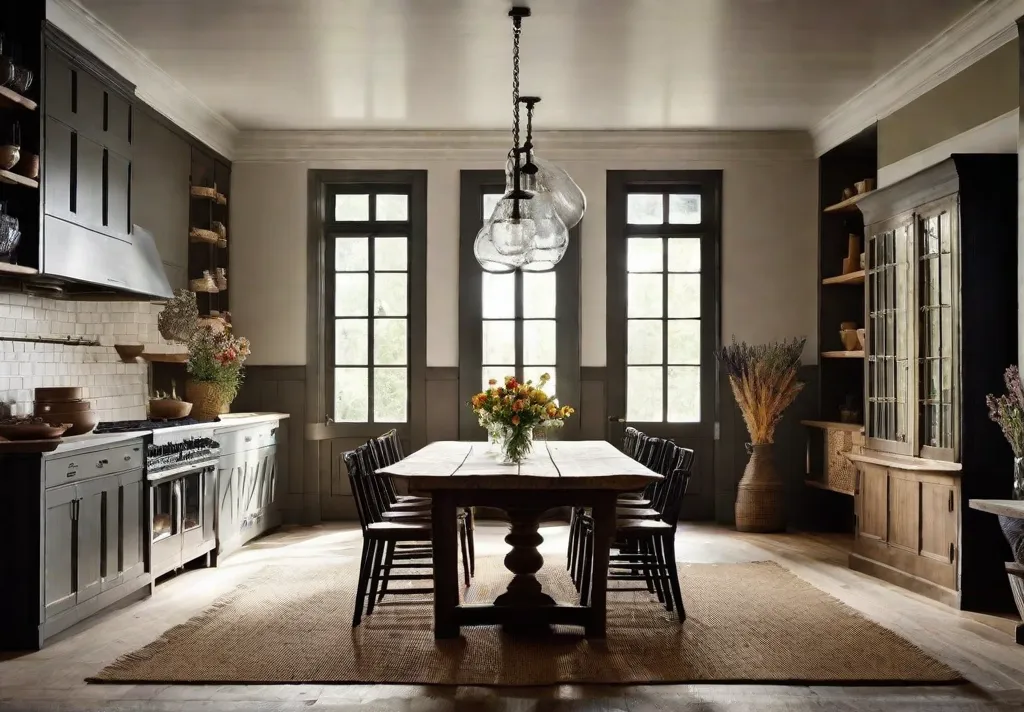
Tips for Incorporating Stone
- Add visual interest by pairing stone with reclaimed wood beams and accents.
- Contrast the natural texture of stone with sleek cabinets and modern metals.
- Incorporate stone both indoors and outdoors for a cohesive, organic look.
- Seal natural stone regularly to prevent staining.
Rustic Metals
The warmth of wood couples beautifully with the cool, rugged edge of distressed metal finishes. Wrought iron, galvanized steel, copper, and bronze add lovely contrast and an industrial touch when used for fixtures, accents, and hardware.
Best Metals for Rustic Kitchens
- Wrought Iron: With its black finish and intricate scrollwork, wrought iron infuses old-world charm when used for lighting, pot racks, and wine glass racks. Opt for a distressed finish.
- Galvanized Metal: Galvanized steel or tin offers a grey, weathered finish and industrial aesthetic. Use for countertop brackets, open shelving, range hoods, or farmhouse sinks.
- Copper: From range hoods to apron front sinks, copper brings a welcoming, sunset-inspired glow with its warm metallic finish. Over time, copper develops a unique patina.
- Bronze: Bronze offers the dark, sophisticated look of wrought iron combined with the warmth of copper. Use for a showstopping range hood or statement lighting. Consider an aged bronze finish.
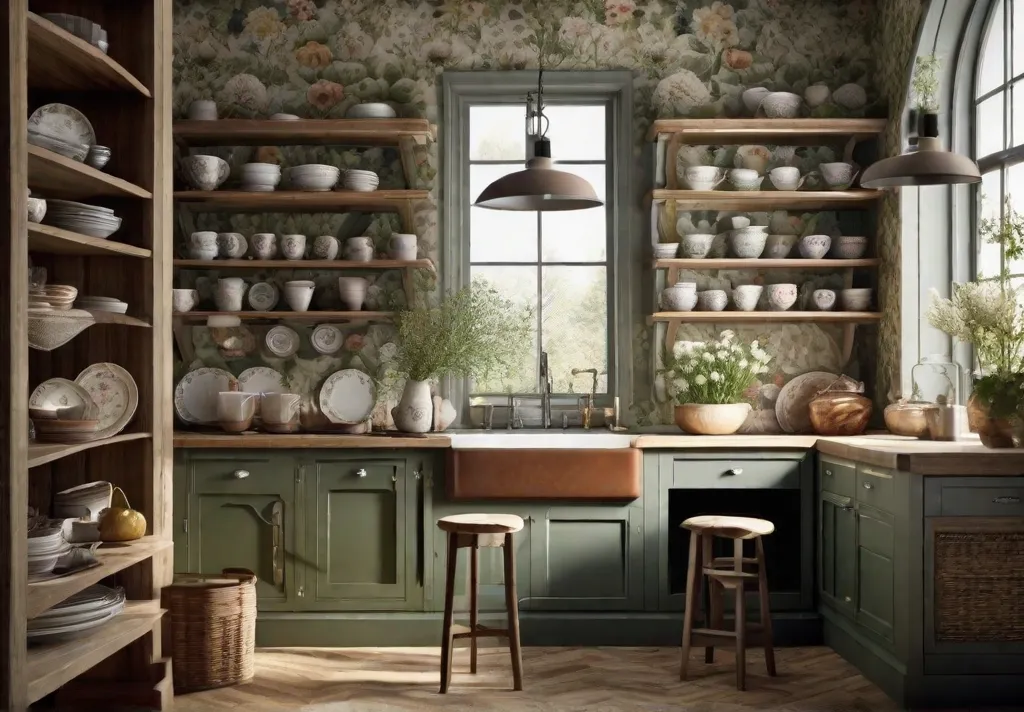
Tips for Incorporating Rustic Metals
- Soften the hard edges of metals with natural materials like wood beams and stone backsplashes.
- Opt for a distressed or aged metal finish rather than a shiny and new one.
- Incorporate metal both indoors and outdoors for a cohesive, organic look.
- Allow patinas to develop over time on copper and bronze.
Farmhouse Sinks
No rustic kitchen is complete without a farmhouse apron-front sink! Typically made of durable cast iron or fireclay ceramic, these deep sinks feature a front apron and slightly rounded corners for a timeworn look. Their deep basins easily handle oversized pots and pans.
Farmhouse sinks make a profound style statement with their vintage charm. Pair with metal hardware and a gooseneck faucet to play up the old-fashioned utilitarian look. Opt for classic white or experiment with trendy colors like navy blue or emerald green for a modern twist.
Benefits of Farmhouse Sinks
- Generous size fits large pots and pans.
- The front provides a built-in landing space for dishes and kitchen tools.
- Timeless style works in both modern and traditional kitchens.
- Enameled cast iron is easy to clean and maintain

Tips for Selecting a Farmhouse Sink
- Choose fireclay over cast iron for a smoother, less porous surface.
- Measure existing base cabinets to ensure proper farmhouse sink fit.
- Coordinate metal sink hardware with other metals used throughout the kitchen for a cohesive look.
- Pair with butcher block or thick granite countertops to support the sink’s weight.
Open Shelving
The rustic kitchen embraces an airy, lived-in aesthetic through open shelving crafted from reclaimed barn wood or galvanized pipe. This intelligent design choice eliminates fussy cabinetry and showcases beautiful dishware while keeping everyday essentials within reach.
Mix glass canisters and ceramic crocks with vintage cake stands and wire baskets to display your favorite kitchen tools. Leave enough room between shelves for hanging copper pots to build vertical storage space.
Benefits of Open Shelving
- Eliminates the need for upper cabinetry, reducing the cost
- Showcases beautiful kitchenware and rustic accents
- It creates a lighter, airier feel than closed cabinetry
- Improves accessibility to frequently used cooking items
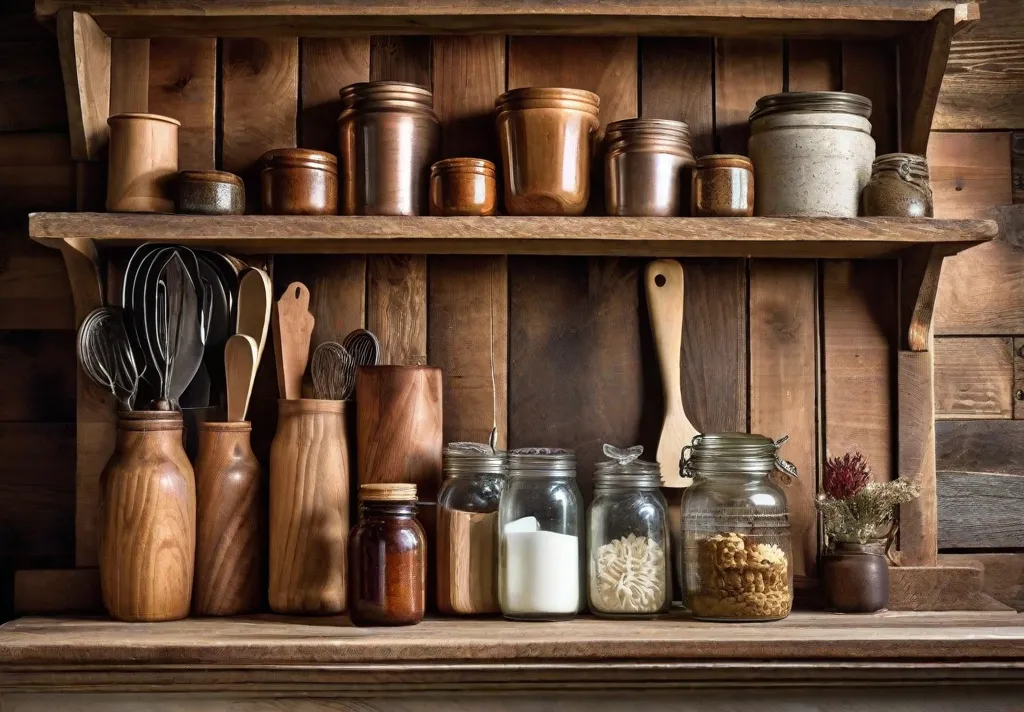
Tips for Styling Open Shelves
- Incorporate items with personal significance, like antique platters passed down from grandparents.
- Spotlight decorative ceramic pieces, vases and candlesticks
- Hang copper pots and utensils from iron hooks.
- Mix and match metal, glass, ceramic, and wood textures.
Warm, Organic Color Palettes
Since wood and stone are the foundational elements of rustic style, it’s best to let these natural materials shine by keeping the color palette neutral. Warm whites, earthy browns, soothing sage greens, and sky blues emulate colors found outdoors to create a calm, welcoming backdrop.
Terracotta and mustard yellow offer mood-boosting pops of color for those desiring more vibrancy, while deep hunter green and navy blue inject a touch of drama. Ultimately, the color palette should enhance, not compete with, the kitchen’s organic textures.
Best Color Combinations
- Soothing creams + warm oak tones
- Crisp white + black accents
- Earthy terracotta + cool gray
- Sage green + wood tones

Tips for Color Schemes
- Limit colors to 3-5 for a cohesive look.
- Use color on walls, textiles, and accessories instead of permanent elements like cabinetry.
- Tone down brightly colored walls with neutral cabinetry.
- Choose timeless over trendy colors for long-lasting appeal.
Vintage-Inspired Lighting
Nothing sets the mood like lighting! Vintage-style fixtures with visible Edison bulbs, black wrought iron finishes, and brass accents shine in rustic kitchens, providing ambient lighting with old-fashioned charm.
Make a dramatic style statement for a serious wow factor by suspending a modern take on a French country chandelier over a farmhouse table. Opt for a style with candlestick-style arms, clear glass shades, and an aged brass or iron finish.
Best Lighting for Rustic Kitchens
- Pendant lights over islands and sinks.
- Wrought iron chandeliers with Edison bulbs
- Black iron sconces
- Clear glass lanterns over dining tables
- Rustic modern track lighting
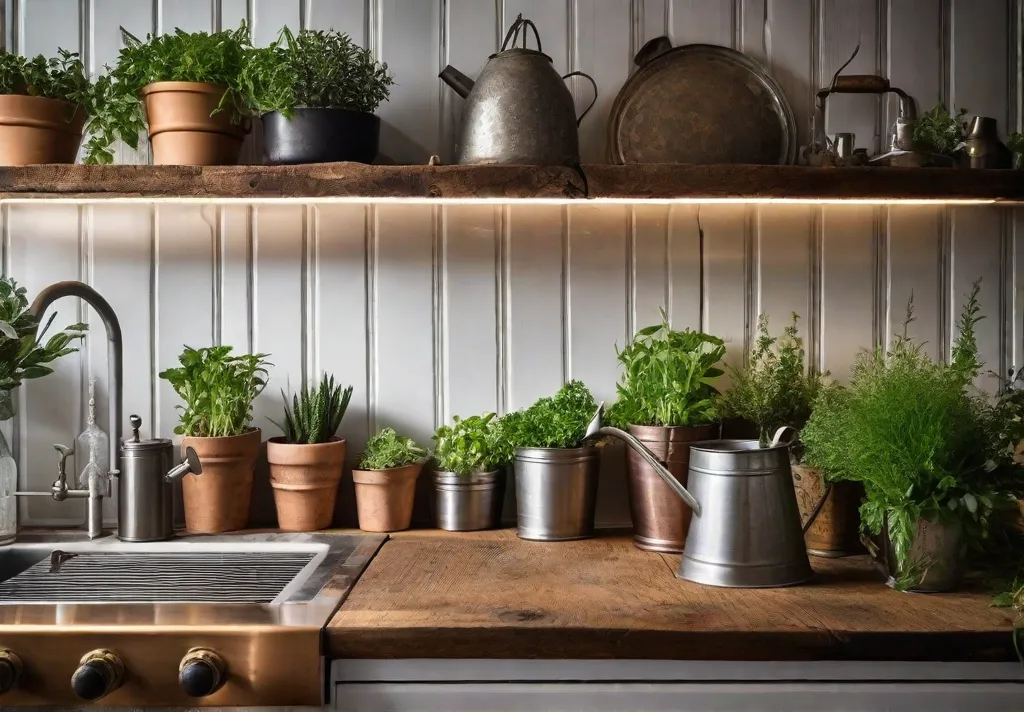
Tips for Kitchen Lighting
- Incorporate multiple lighting sources for functionality.
- Use dimmers to control brightness.
- Mix black and brass finishes for visual interest.
- Add sconces around mirrors for task lighting.
Personal Touches
While adhering to specific design elements creates an authentically rustic kitchen, adding personal details and antique accents gives it heart and soul. Displaying items with nostalgic or sentimental value transforms the space into a warm, welcoming gathering spot that reflects your family’s unique story.
Some ideas for infusing personality include:
- Showcasing old family photos
- Displaying your grandmother’s vintage mixing bowls
- Hanging your kids’ colorful artwork
- Adding a chalkboard wall for messages and doodles
- Creating a mini gallery wall of framed botanical prints
The options are endless! Even something as simple as a vase of fresh flowers makes the space feel loved and lived in.

Tips for Personalizing Your Rustic Kitchen
- Rotate seasonal pieces to keep the look fresh
- Limit clutter and regularly edit accessories
- Spotlight heirlooms without overpowering the design
- Add handmade ceramic pieces for an authentic look
- Use baskets, jars, and crocks to corral loose items
Conclusion
Creating the perfect rustic kitchen requires thoughtfully blending natural materials like reclaimed wood, stone, and metal with vintage-inspired lighting, farmhouse sinks, and personal accents. Focus on quality artisan craftsmanship over fussy details to enhance the welcoming, organic aesthetic that makes rustic kitchens so beloved.
Adhering to these eight essential elements results in a warm, inviting space your family and friends will flock to, drawn in by the cozy ambiance you’ve created. Just add hearty home cooking and meaningful conversation for a space that nourishes body and soul.
Frequently Asked Questions
What are some budget-friendly ways to get a rustic look?
Some affordable ways to infuse rustic style include using faux reclaimed wood wallpaper instead of actual reclaimed boards, choosing granite remnants for countertops, installing galvanized sheet metal backsplashes, and purchasing vintage-looking lighting and hardware from budget-friendly retailers.
How do I add rustic flair to my modern kitchen?
The key is blending rustic and modern elements seamlessly. Incorporate a sizeable stone-colored island, distressed wood open shelving, black metal hardware, and pendant lighting alongside sleek cabinetry and stainless steel appliances. Add personal accents like ceramic chicken decor and a chalkboard wall for a playful contrast.
What are the most critical rustic kitchen elements?
The foundational rustic kitchen elements are:
- Natural wood finishes like oak cabinetry and reclaimed wood beams
- Farmhouse sink with vintage-style faucet
- Neutral, earthy color scheme
- Rustic statement lighting
- Natural stone backsplash
- Open shelving for display
Focus on nailing these essentials, then have fun adding personal details!
